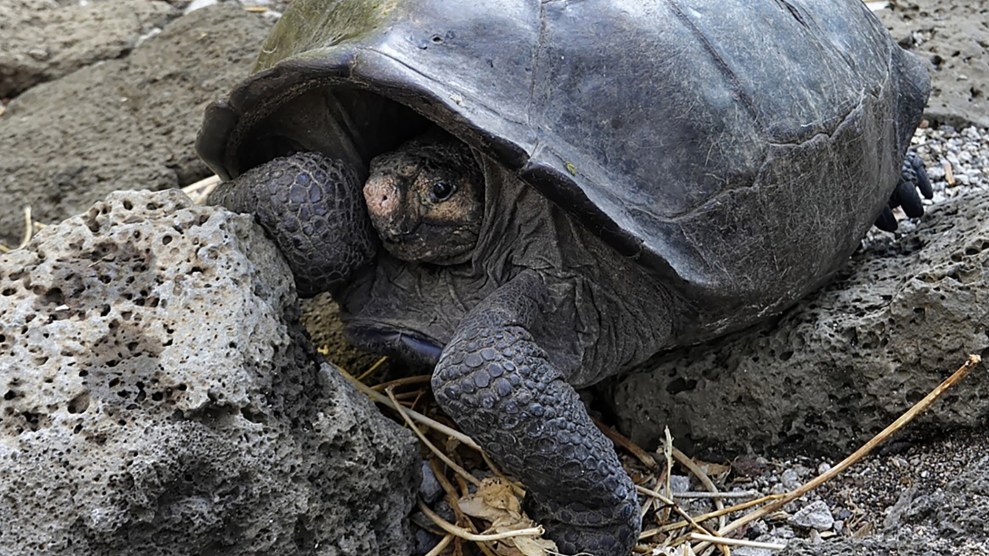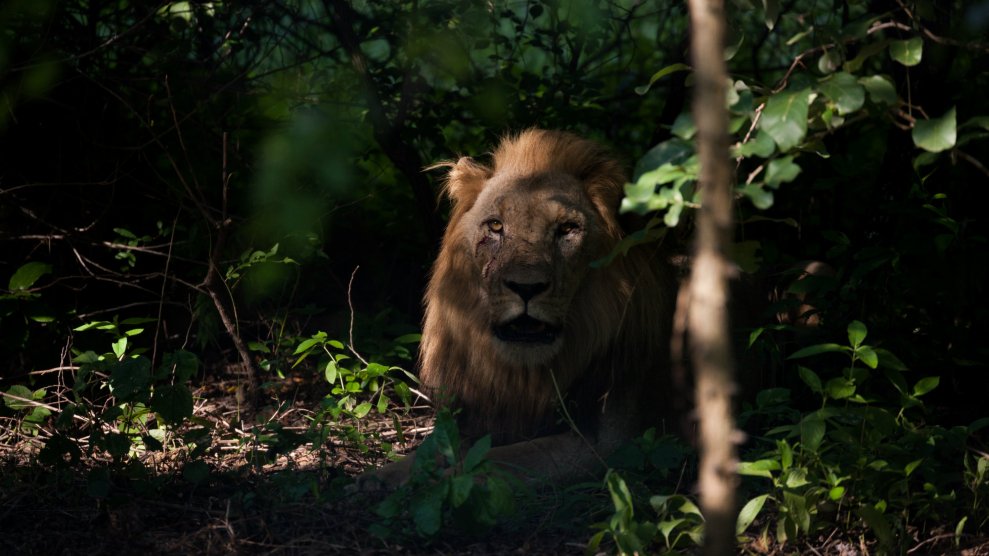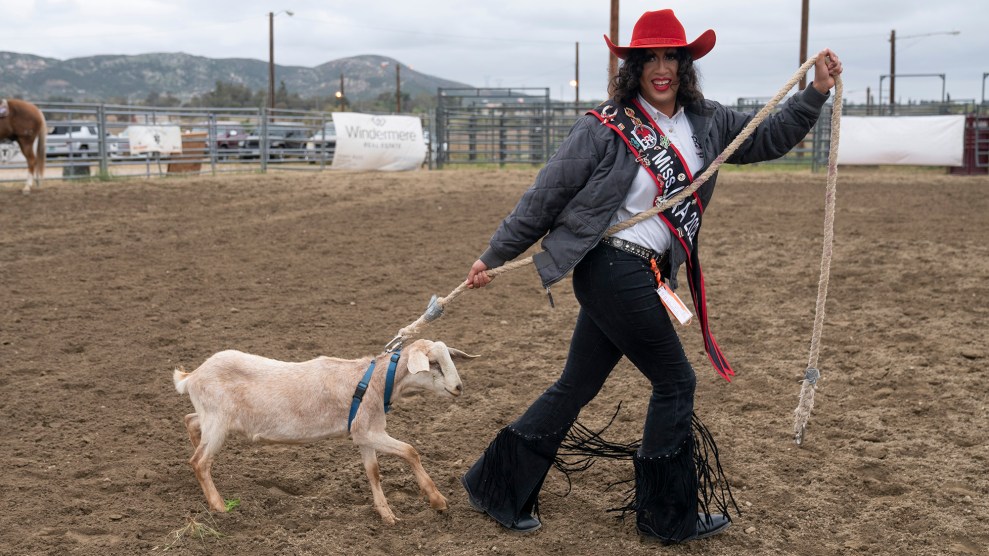
A specimen of the giant Galapagos tortoise Chelonoidis phantasticus at the Galapagos Archipelago.Rodrigo Buendia/AFP/Getty Images
Scientists have discovered a species of giant tortoise in the Galapagos Islands that has not been seen since 1906. The species, Chelonoidis phantasticus, more commonly known as the Fernandina giant tortoise, had been listed by the International Union for Conservation of Nature as critically endangered and possibly extinct.
The female tortoise, believed to be more than 100 years old, was found in a patch of vegetation on a remote part of the island of Fernandina. Tracks indicate there may be even more of these tortoises elsewhere.
The discovery brought hope that in a world of species decline, bee-colony collapses, and insect disappearances, one species thought lost may still remain.
Stuart Pimm, a professor of conservation ecology at Duke University, is optimistic the species can go on if scientists can find other living members.
“They will need more than one [tortoise], but females may store sperm for a long time,” Pimm told the Associated Press. “There may be hope.”
That may not be the only species-saving news in the past week. Villagers in rural southeastern Taiwan said they recently spotted a Formosan clouded leopard, according to Taiwan News. Scientists are working to verify their claims: The last confirmed sighting of the leopard was in 1983, and the species was declared extinct in 2013.
Recharge is a weekly newsletter full of stories that will energize your inner hellraiser. Sign up at the bottom of the story.
- Hidden no more. NASA has named one of its buildings after Katherine Johnson, the 100-year-old mathematician at the center of the movie Hidden Figures. Johnson’s work was essential to the agency’s early astronaut missions into space. The Katherine Johnson Independent Verification and Validation Facility, publicly dedicated to her last Friday, is in her native West Virginia. (ABC News)
- Defending themselves with cameras. About a decade ago, Prince Peter watched as his barber shop, along with the homes of 19,000 others, was demolished by bulldozers in his hometown city of Port Harcourt, Nigeria. Soldiers killed 12 people who protested. Peter and the other residents left homeless had little recourse against the well-connected developers who flattened their waterfront shantytown to build more modern structures in its place. Now, he and 40 other volunteers are fighting back by documenting smaller-scale government demolitions, using videos, songs, and radio shows to pressure leaders against dispossessing the poor. Participants note that there haven’t been any government-sponsored mass evictions since. For Peter, it’s a bittersweet victory. If there had been such a community effort a decade ago, he said, maybe his neighborhood would still be standing. (Christian Science Monitor)
- Hellraiser in training. When we last profiled 12-year-old star reporter Hilde Lysiak, she had already broken the news of a murder in her Pennsylvania hometown and reported on drugs in her local high school. While on assignment in Arizona, she hopped the US-Mexico border fence and had a run-in with a cop who threatened to put her in juvenile detention. When he said it was illegal for her to film him, she asked, “What exactly am I doing that’s illegal?” Hilde’s video of the encounter has racked up more than 400,000 views on YouTube, and has earned her the support of the First Amendment Coalition of Arizona. “One can only imagine,” said coalition lawyer Dan Barr, “what sort of stories she will be turning out once she has a driver’s license.” (Washington Post)
- Meet one of the Grand Canyon’s oldest junior rangers. Rose Torphy, 103, said she would do her bit to protect the national treasure for her great-great-grandchildren. “My parents taught me to care for the land but not all kids have that,” she said. Relatives added that Torphy has been wearing her ranger pin since she was sworn in at the Grand Canyon National Park in January. (ABC News)
Have a Recharge story of your own or an idea to make this column better? Fill out the form below or send me a note at recharge@motherjones.com.


















